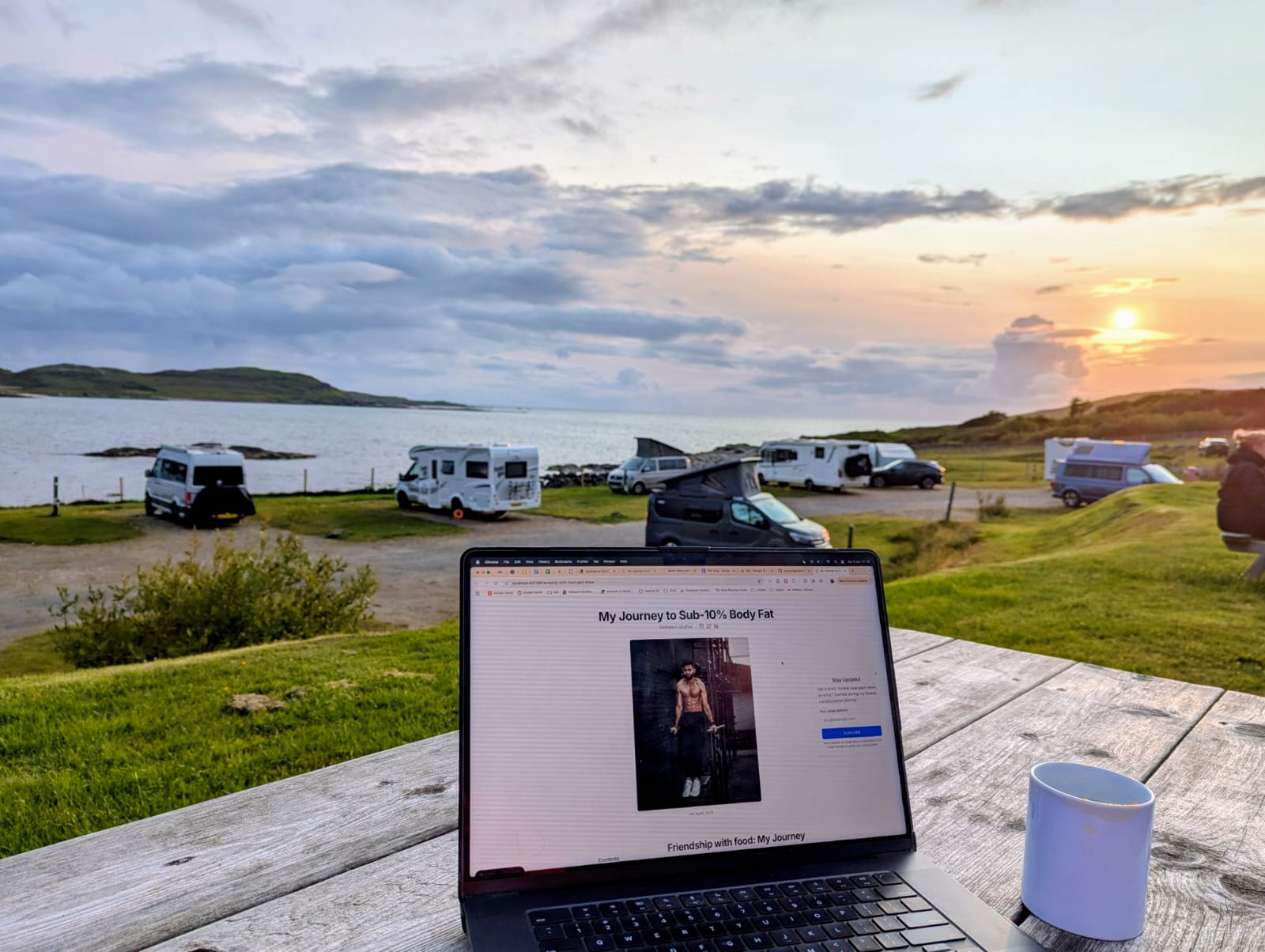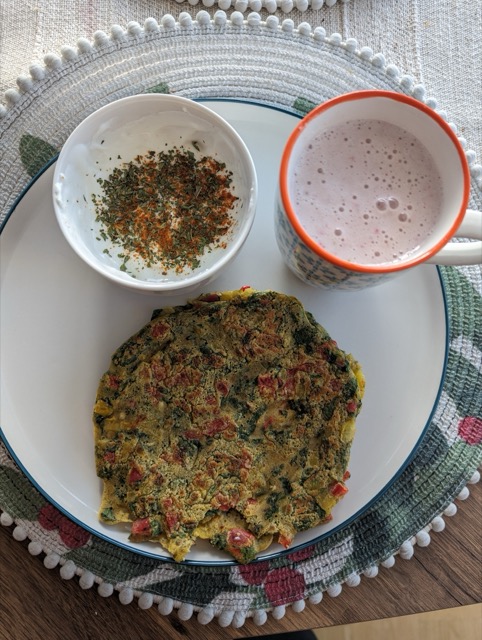Friendship with food: My Journey
June 8, 2025

Part One explained why nutrition deserves a special relationship, and Part Two provided some essential science to help build that relationship.
In this post, I'm sharing exactly what I did. Every answer below is pulled straight from my real logbook - nothing more, nothing less.
I've structured this post in a Q&A format to make it easier to navigate and to help you find exactly what you're looking for.
Frequently Asked Questions
1. What time do you eat?
- Breakfast – 09:00
- Lunch – 13:00
- Snack – 17:00
- Dinner – 20:30
Keeping these times consistent helped lock in hunger cues and kept my evenings calm.
2. What were your calories and protein numbers?
Throughout the year, my calorie intake changed based on my goals. I went as high as 3,000 calories per day during my bulking (weight gain) phase and as low as 1,600 calories per day leading up to the photoshoot. Protein stayed consistent - never below 120g, and up to 150g during bulking.
3. What were some of your most frequent meals?
- Breakfast – Overnight oats with a scoop of whey protein stirred in. I preferred eating whey with oats to drinking shakes.
- Lunch & Dinner – Rotated between dal + rice/chapati + 0% fat yogurt, tofu with vegetables and rice, and a paneer or cheese salad.
- Snack – Almost always a banana plus a protein bar or low-fat yogurt around 17:00.
Every meal included fruits or vegetables.
During bulking, I had more flexibility with meals (as long as I tracked everything), but during cutting I had to be much more disciplined.
4. How did you structure protein intake across the day?
My daily protein goal was 120g (150g while bulking), and I found it easiest to distribute this evenly across meals.
A strong start with oats and whey at breakfast, followed by a protein-heavy lunch, meant I had already reached 70–75% of my protein target by evening, making dinner stress-free.
5. What stopped cravings from derailing you?
- Planning meals and eating on time, especially never skipping my evening snack
- Using fruits and flavored yogurt to satisfy sweet cravings
- Always carrying my own snacks (fruit or a protein bar)
The riskiest situation was being hungry and not knowing what I was going to eat.
6. Alcohol – yes or no?
No. Alcohol is pure empty calories. I followed the same rule for sugary drinks and packaged snacks.
7. How did you handle social outings?
- Calorie reserve – I reserved an extra 300–500 calories that day for the outing by adjusting other meals.
- Order rule – Chose dishes with clear protein and fiber, and fewer hidden ingredients to help estimate calories.
- Dessert – Either avoided it or shared a small portion.
- Drinks – Avoided calorie-heavy drinks.
8. What does your meal prep routine look like?
Most of my prep focused on getting protein options ready for the next 2–3 days. Overnight oats made breakfast nearly effortless.
9. How did you stay on track while traveling?
- I always packed single-serve whey sachets, protein bars, and fruit.
- For flights, I also carried protein yogurt in my hand luggage.
- Avoided calorie-dense foods like desserts and fried snacks.
- Made sure to stay hydrated throughout.
10. Which supplements did you actually use?
- Whey protein consistently for protein supplementation.
- Vitamin D, vitamin B12, and iron for a short period based on blood test results.
11. Did you ever deviate? What happens if you exceed by 500 calories on a day?
Yes, I did deviate at times. It's completely normal. If I went over by 500 calories in a day, I would just consume 100 calories less for the next 5 days. I never stressed too much about it or tried to go extreme the next day.
12. Did you ever have issues digesting whey protein?
I did have some issues digesting whey when I first started, especially when I was drinking it as a shake. But once I switched to eating it with oats or yogurt, those problems disappeared completely.
13. What brand of whey protein did you use?
14. How did you manage hunger?
- Never drastically reduced my calories, only by about 100–150 at a time
- Ate small, frequent meals instead of large, infrequent ones
- Focused on a high-protein, high-fiber diet for satiety
- Made sure never to let myself get too hungry between meals
15. Did you ever try keto, intermittent fasting, or any other kind of diet?
No, I didn't try keto, intermittent fasting, or any diet I couldn't see myself following sustainably for the next 10 years.
16. What did you eat before and after workouts?
I didn't focus much on pre- or post-workout meals. Before a workout, I usually had an easy-to-digest carb like a banana about 30 minutes to an hour before training. I didn't specifically target protein intake before or after workouts but instead made sure to distribute my protein evenly throughout the day.
17. Did you eat differently on rest days vs. workout days?
No, everything was exactly the same.
18. How did you track your food intake?
I used the Fittr app since I had a coach there. I logged everything I ate, especially protein, and used a kitchen scale when needed. Over time, I got better at estimating portion sizes.
19. Did you ever eat junk food or give in to cravings?
Yes, occasionally. I didn't cut out anything completely. I just made room for it by balancing the rest of the day and sharing small portions during social meals.
20. How much water did you drink each day?
I didn't track it strictly, but I aimed for around 2–2.5 liters daily.
This is my personal routine. Take what's useful, adapt it to your goals, and leave what doesn't fit. If you have questions or need help tailoring it, please feel free to reach out - I'm happy to share more.
A Few of My Home-Cooked Meals

Stay Updated
Get a short, honest post each week on what I learned during my fitness transformation journey.
You'll receive an email with a confirmation link. Click the link to verify your subscription.
Check Your Email
I've sent you a confirmation link. Please check your email to verify your subscription.








